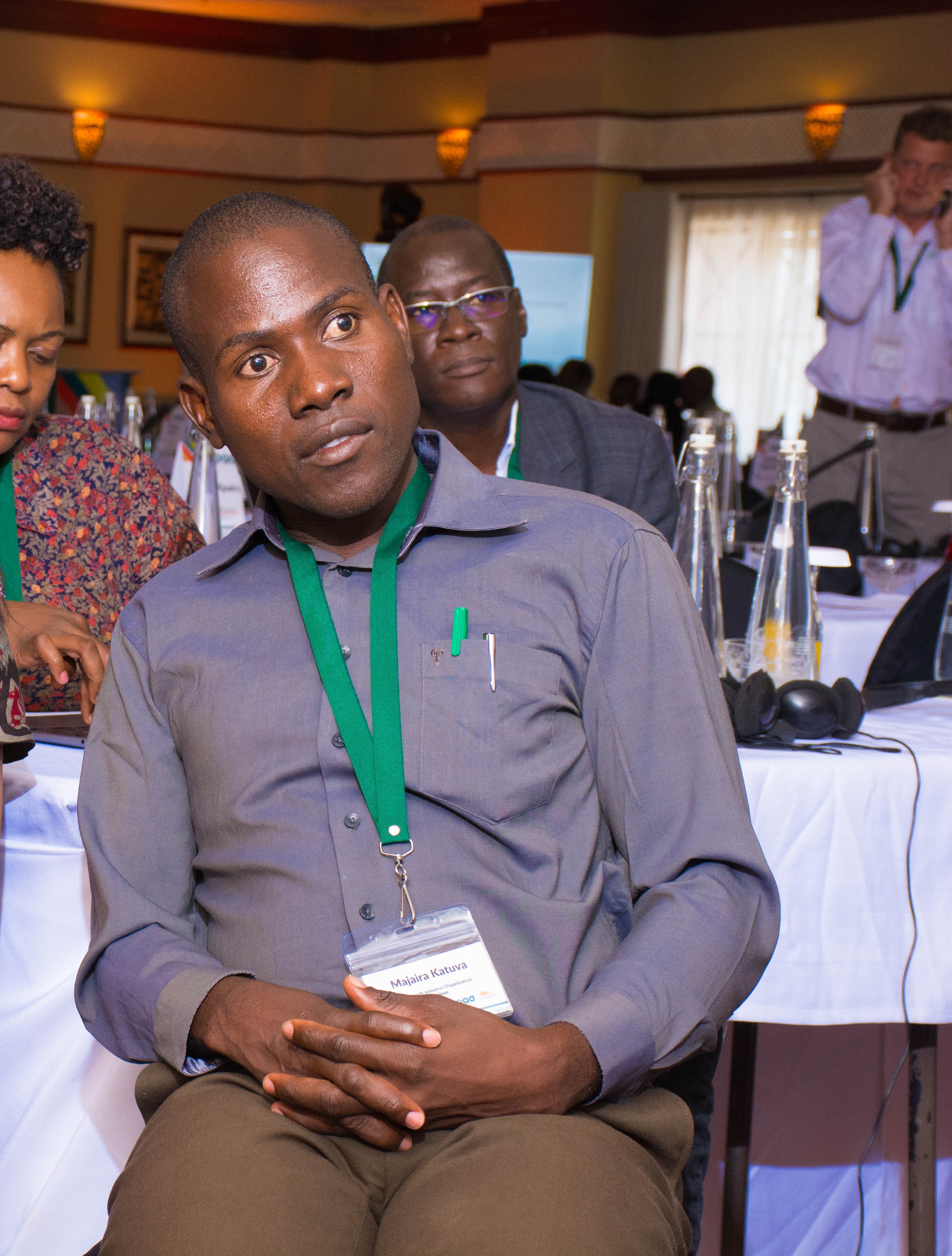Empowering Voices: The APAD Conference’s Impact on Mbire’s Youth and Conservation
Majaira Katuva, secretary of the Angwa Youth Initiative Organisation (AYIO) from Mbire District, Zimbabwe, during the Africa Protected Area Directors Conference in Victoria Falls, Zimbabwe.
For too long, the voices of communities living alongside Africa's protected areas have been absent from crucial conservation discussions. This absence has often led to a disconnect between conservation efforts and the realities faced by those most impacted by wildlife and protected areas. In March, the African Wildlife Foundation (AWF) and the Zimbabwe Parks & Wildlife Management Authority (ZimParks) co-hosted the second in-person Africa Protected Areas Directors (APAD) Conference in Victoria Falls, Zimbabwe. This landmark conference offered a pathway to conservation-driven sustainable development.
With funding support from the German Federal Ministry for the Environment, Nature Conservation, Nuclear Safety, and Consumer Protection (BMUV), the conference brought together an array of leaders in the conservation space. Majaira Katuva, 33, secretary of the Angwa Youth Initiative Organisation (AYIO) from Mbire District, Zimbabwe, was among those representing the local communities, thanks to AWF's support.
AWF has been actively engaging with local communities in Mbire supporting programs like training of Community wildlife scouts, interventions to reduce Human-Wildlife Conflicts, and promoting gender inclusivity in conservation.
Following the recent release of the conference's final report, we spoke to Katuva about the importance of community voices and the key takeaways from APAD. The report highlights the need for sustainable financing mechanisms, transboundary cooperation, and the active participation of all stakeholders in successful conservation efforts.
Q: Why is it crucial to involve local communities in conservation efforts?
Katuva: Local communities are the true guardians of the land and its wildlife. Conservation efforts must shift from viewing them as beneficiaries to key partners in project implementation. This fosters a sense of ownership and encourages sustainable resource use. When communities are genuinely involved, they become invested in protecting these natural resources.
Q: How did the APAD Conference change your perspective on community involvement?
Katuva: Hearing conservation leaders discuss human-wildlife conflict and strategies to uplift communities – economically, socially, and financially – was a turning point. Previously, I viewed wildlife as the top priority. However, Kaddu Sebunya, AWF CEO, emphasized the need for Africans to coexist with wildlife. His presentation highlighted how social, financial, and environmental strategies can achieve this integration. This message was further solidified during our visit to Matetsi in Sikabelo village, where communities live peacefully alongside wildlife and benefit economically from conservation.
Q: What was your key takeaway regarding the inclusion of local communities in conservation?
Katuva: Community voices are essential for redefining conservation policies and integrating gender equality. When these voices are included, particularly during the planning stages, a collaborative effort emerges between communities and conservation project implementers. This fosters a balance between development and conservation.

Majaira Katuva, secretary of the Angwa Youth Initiative Organisation (AYIO) from Mbire District, Zimbabwe
Q: Did the conference offer ideas for engaging Mbire's youth in conservation?
Katuva: Many youths in Mbire view conservation negatively because they don't see the benefits. The conference provided strategies to address this. With over 80% of youths unemployed, engaging them in sustainable economic activities like ecotourism, agroforestry, beekeeping, or small livestock rearing is key. Forming formalized groups and clubs is crucial to showcase their efforts at conferences like APAD and ensure their voices are heard. The youth of Mbire need to formalize their clubs and associations, focusing on livelihoods and biodiversity conservation. These platforms provide opportunities to share their efforts and ensure their voices are heard by experienced conservationists who value the contributions of young people.
Q: How will you use your experience to advocate for community inclusion in conservation?
Katuva: The APAD Conference was a pivotal moment, inspiring me to champion the inclusion of local community voices in conservation. It was a catalyst for AYIO to devise enhanced strategies for engaging local communities and uniting them under the cause of natural resource conservation. The conference endowed me with the necessary knowledge and skills to effectively manage conservation projects. In my role as secretary of AYIO, an organization that serves as a conduit between development and conservation, I am committed to collaborating with local authorities to ensure the community stays well-informed about international wildlife policies.